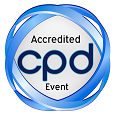
David Köhne
Laser-Laboratorium Göttingen e.V., Germany
Title: Principles and applications of optical switching assisted imaging and structuring schemes
Biography
Biography: David Köhne
Abstract
In STED fluorescence microscopy, in addition to the excitation laser, a second laser beam is used to prevent certain molecules from fluorescing by utilizing the effect of stimulated emission. In most cases, this beam is doughnut shaped with zero intensity in the center. Increasing the STED-intensity decreases the volume where fluorescence is still allowed. This volume is called the effective point spread function of a STED microscope. Already in 1999, it was postulated that this confinement of the effective excitation volume can also be used to spatially control chemical reactions on the nanometer scale. Since then, the experimental realization of STED and STED-inspired diffraction unlimited two-photon polymerization lithography (2PPL) has been reported. While STED nanoscopy reached a resolution of better than 10 nm, minimal feature sizes for STED 2PPL are around 55 nm. In this work, a novel ablative technique for transparent materials, based on a combination of the STED and light induced backside wet etching (LIBWE), is presented. This new technique uses a primary laser in the visible range with low pulse energies and short pulse duration to imprint micrometer size features on the sample surface. The ablation is generated by the LIBWE process inside a high-concentrated dye solution in direct contact with the transparent material. The use of a second red-shifted laser, superimposed to the primary laser, inhibits, due to the STED process, LIBWE to take place. With this technique we were able to imprint micrometer-sized features in transparent materials with just a one step process. The technique holds great promises in creating sub-diffraction sized surface structures.

